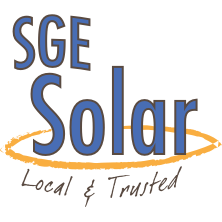NIU staff member’s new children’s book explores the science of solar energy
By Northern Illinois University
July 11, 2017
Read the original article Here
On July 5, Gillian King-Cargile, director of NIU’s STEM Read program in the P-20 Center, released her new children’s book, The Toy and the Test Drive. The book is the third installment in the Stuffed Bunny Science Adventure Series published by NIU Press. It explores concepts of solar power and potential and kinetic energy in a fast-paced children’s narrative designed to engage young readers.
“If we can create fun, exciting picture books that will get kids interested in the characters and the pictures, then science is exciting for kids who don’t necessarily see themselves as scientists or engineers,” King-Cargile says. “The fiction books might spark their interest in a way that more traditional non-fiction books might not.”
The book includes an interview with Seth Darling, a Nanoscientist working at Argonne National Laboratory whose work focuses on next-generation solar energy devices and solar energy systems, among other topics. Darling was a science consultant on the book.
King-Cargile is excited to release a book that addresses solar energy right now. “In a time when green energy is under attack, it’s important to keep ideas about alternative energies alive in our education system,” she says.
The Stuffed Bunny Science Adventure Series arose as a partnership between King-Cargile and the P-20 Center’s STEM Read program. The series is designed to teach science, technology, engineering, and math concepts aligned with the Next Generation Science Standards (NGSS)..
The STEM Read website (stemread.com) provides free lesson plans, video games and other activities for each book that parents and teachers can use to further engage children in the science behind the stories. Hands-on activities, such as building a solar oven and making s’mores, bring the science of solar energy alive for children.
Jeffrey R. S. Brownson, associate professor of energy and mineral engineering at Pennsylvania State University, praises the book: “This is a fun story that provides a good introduction to the science and engineering concepts surrounding solar energy.”
King-Cargile will be presenting readings and activities for children at the following times and locations.
- 4:30 PM on Wednesday, July 12 at the Maple Park Public Library
- 10:00 AM on Thursday, July 13 at the Cortland Community Library
- 10:30 AM on Monday, July 17 at the DeKalb Public Library
The readings are free and open to the public. Books will be available for purchase. Proceeds from the book sales benefit STEM Read’s programs for readers of all ages.
For more information, contact Gillian King Cargile at 815-753-6784 or gkingcargile@niu.edu.
